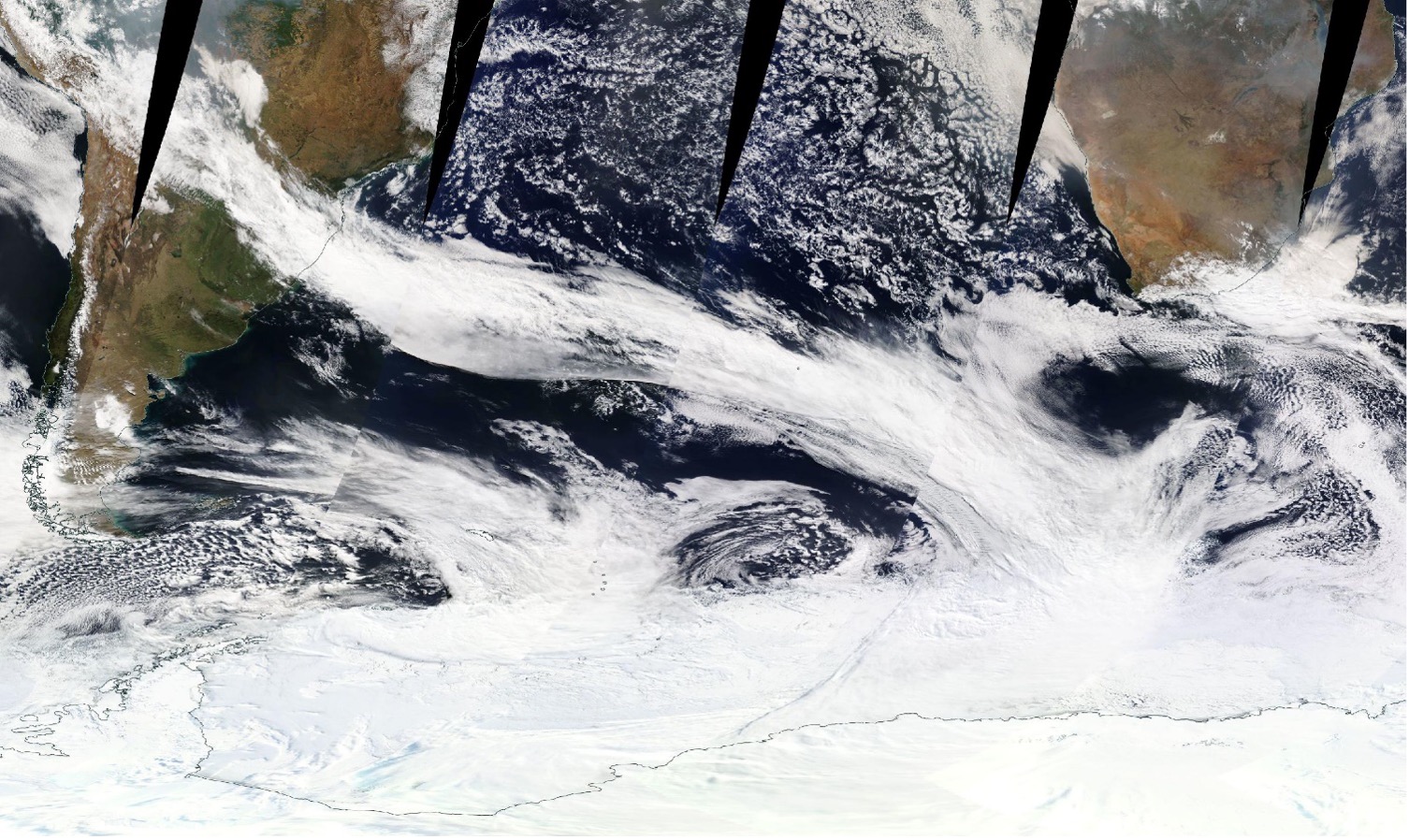 Earth & Space
Earth & Space
‘Rivers in the sky’ carrying warm air destroy precious Antarctic sea ice
Polar regions – where most global ice sheets are stored – are very sensitive to today’s global warming. As a likely consequence, intense atmospheric rivers – long extensions of concentrated moisture in the atmosphere – have developed, leading to polar land ice melt. New research reveals that atmospheric rivers can also cause sea ice melt by bringing warm air from the tropics to Antarctica.

Looking at satellite images or Google Earth, you often find continent-long elongated clouds covering our planet, which may look like "rivers" running through the sky. These rivers are narrow belts of concentrated moisture in the atmosphere. Atmospheric rivers extend from the tropics (where water tends to evaporate) towards high latitudes, causing the growth of extratropical cyclones – important type of storms that shape the weather across much of the Earth. Atmospheric rivers account for at least 90% of the annual moisture transport from the tropics into high latitudes, and can cause extreme rain and snow in regions where violent cyclones land. Therefore, atmospheric rivers majorly control global climate, and especially today, likely behave in response to drastic climate change.
Polar regions harbor most ice sheets (which regulate ocean levels) on the planet, and are one of the areas worst hit by global warming. Global warming is causing accelerated ocean evaporation and higher atmospheric water vapor level. Most probably as a result of this drastic climate change, atmospheric rivers have been increasingly developing in cold areas. Scientists estimate that such intense atmospheric rivers – which transport abundant moisture and heat fast towards the poles – endanger both land and sea ice. Indeed, atmospheric rivers were recently identified as a major cause of extreme land ice melt events in both Greenland and Antarctica. However, their impact on the melt of sea ice – seasonal ice that is frozen only during winter – remains unknown.
To address this question, we investigated atmospheric conditions and Antarctic sea ice in 1973 and 2017. These years mark exceptional events – the formation of New Zealand-sized holes, called polynyas, in the middle of the sea ice cover. As polynyas can be shaped by intense heat, atmospheric rivers might have contributed to the formation of the huge sea ice holes.
We found that intense atmospheric rivers appeared right before the polynyas formed both in 1973 and 2017. By investigating the effects of atmospheric rivers on sea ice state during these two polynyas formation events, we showed that atmospheric rivers triggered sea ice thinning. In fact, the persistent atmospheric rivers brought an excessive amount of atmospheric water vapor and liquid water in the clouds. These bands of abundant water vapor and opaque clouds brought warm air to the sea ice surface, which drove its melt and prevented its refreezing at night.
In summary, this study allowed us to discover that atmospheric rivers can cause Antarctic sea ice melt by driving polynya initiation (melting the ice cover) and maintenance (preventing refreezing). Notably, a set of the polynya events happened very recently in 2017, highlighting the importance of atmospheric rivers in the ongoing climate change. Our discovery about polynya dynamics is the tip of the iceberg. In other words, atmospheric rivers' effects on the Antarctic sea ice resilience can be assessed through many additional ways, such as changes in ice surface temperature or ice coverage and the frequency of snowfall. Future study will enable us to obtain a more complete picture of sea ice dynamics and atmospheric rivers.
Under the future climate change scenario, atmospheric rivers will likely appear more frequently, and their location will tend to shift towards the polar regions. Scientists further anticipate that atmospheric rivers will become longer and wider, and will transport high levels of water vapor more effectively, which will eventually drive more frequent extreme weather events like heavy rain. Extending our understanding of atmospheric rivers will, in turn, help us better adapt to future climate.
Original Article:
Francis, D., Mattingly, K. S., Temimi, M., Massom, R. & Heil, P. On the crucial role of atmospheric rivers in the two major Weddell Polynya events in 1973 and 2017 in Antarctica. Sci. Adv. 6, 1-14 (2020).
Edited by:
Dr. Akira Ohkubo , Associate Editor
We thought you might like
Ocean acidification and its effects on coral reef growth
Jul 8, 2016 in Earth & Space | 3.5 min read by Rebecca AlbrightResetting nature’s clock: shifting seasons and species relationships
Sep 14, 2016 in Earth & Space | 3.5 min read by Stephen Thackeray , Sarah BurtheThe silent battle of young corals against ocean acidification
Oct 19, 2016 in Earth & Space | 4 min read by Taryn FosterFor polar bears the cost of living is rising
Mar 13, 2018 in Earth & Space | 4 min read by George DurnerMore from Earth & Space
Discovery of the first radiation belt beyond the Solar System
Jan 27, 2025 in Earth & Space | 3.5 min read by Juan Bautista Climent OliverOne million (paper) satellites
Jan 24, 2025 in Earth & Space | 3 min read by Ewan Wright , Andrew FalleVolcanic Ash: A Nutrient Boost for Reef-Building Corals
Sep 18, 2024 in Earth & Space | 4 min read by Frank Förster , Tom SheldrakeAmmonia Energy: A Call for Environmental Awareness
Aug 29, 2024 in Earth & Space | 3.5 min read by Matteo Bertagni , Robert Socolow , Amilcare PorporatoLikely increase in coral thermal tolerance at a Pacific archipelago
Dec 29, 2023 in Earth & Space | 3 min read by Liam LachsEditor's picks
Trending now
Popular topics


